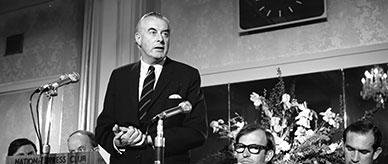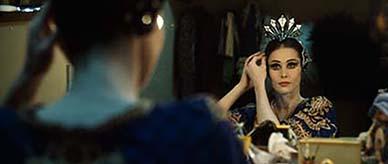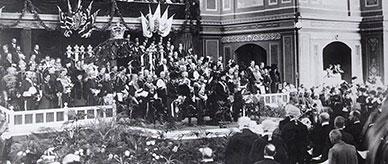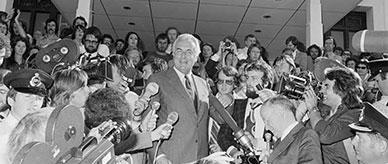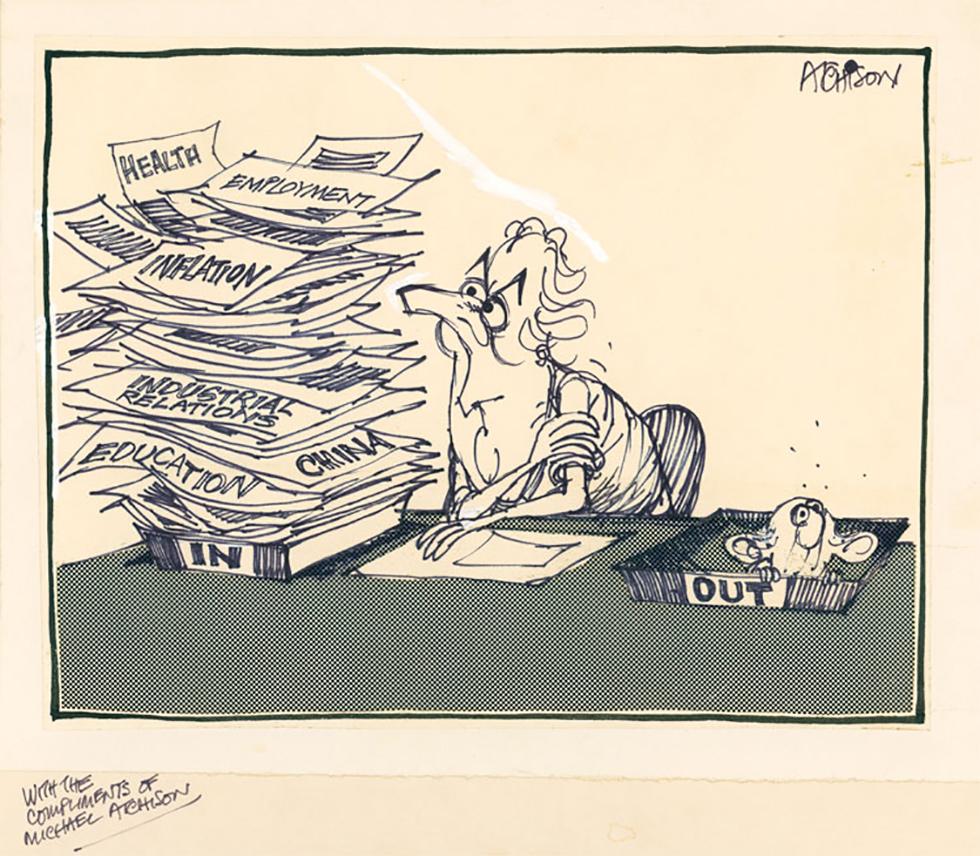
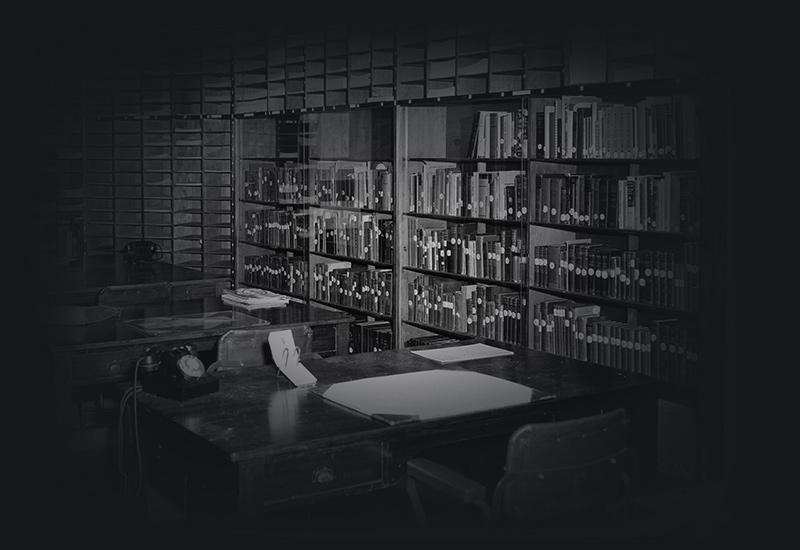

Transcript
[Drawing of Gough Whitlam sitting at his desk, rolling up his sleeves.
On the left is a tray labelled 'IN' with a tall stack of paper. The readable pages are labelled "HEALTH", "EMPLOYMENT", "INFLATION", "INDUSTRIAL RELATIONS", "CHINA", "EDUCATION". On the right is a tray labelled 'OUT' containing a small caricature of William 'Billy' McMahon.
In the top right corner, the cartoonist has signed the cartoon 'ATCHISON'.
Below the image, it has been signed 'WITH THE COMPLIMENTS OF MICHAEL ATCHISON'.]
About this record
This black-and-white cartoon shows prime minister Gough Whitlam immediately after his election, seated at a desk and rolling up his sleeves with a blank sheet of paper in front of him. He looks up at an in-tray piled high with policies, reforms and challenges for the new government. His out-tray holds William 'Billy' McMahon, whose government he had just defeated. Outside the cartoon box is written 'With the compliments of Michael Atchison'. It was drawn in December 1972 by cartoonist Michael Atchison.
Educational value
- This cartoon was published by the Adelaide newspaper The Advertiser on 6 December 1972, following the election of the Australian Labor Party (ALP) into office on 2 December. Edward Gough Whitlam (1916–2014) became the first Labor prime minister since 1949. The cartoon accompanied a lengthy article on the wide-ranging reform program Whitlam had promised during the election campaign, conducted with the slogan, 'It's time'.
- Highlighted in this cartoon is the huge volume of work that the ALP had set itself with its election promises, while also showing that McMahon (1908–88) had been symbolically thrown out. Whitlam immediately addressed the many challenges and targets for reform alluded to by Atchison when he formed a two-man ministry with his deputy Lance Barnard, and made policy decisions until the full ministry was sworn in on 19 December 1972.
- This cartoon was published shortly after the 1972 election when Australians had voted for the ALP for the first time in 23 years with high expectations for a new national vision. Labor had campaigned across a breadth of domestic and foreign policy issues, advocating 'it's time' for change. Atchison picks up on some of the more significant policy areas with his labelling of the papers stacked up in Whitlam's in-tray.
- The reference to China on one of the in-tray papers relates to the key foreign policy promise by Whitlam to recognise the government of the People's Republic of China (PRC) as the sole legitimate government of China. Australia established formal diplomatic relations with the PRC in January 1973, recognised it as the 'One China' and moved Australia's embassy from Taipei in Taiwan to Beijing.
- Outgoing prime minister McMahon, depicted in the cartoon in Whitlam's out-tray, was the Liberal Party member for the House of Representatives seat of Lowe in Sydney from 1949 to 1982. McMahon was a cartoonist's delight as his bald head, prominent nose, conspicuous ears and short stature left him open to caricature. The cartoonist has captured all of these attributes in this image.
- Political cartoons like this one have long been used to illustrate newspaper and magazine articles or to comment amusingly or satirically on political and social issues of the day. Sometimes, a political cartoonist would produce several draft alternatives from which an editor would choose. The cartoonist would then work quickly to produce the final cartoon, especially for a daily publication such as The Advertiser.
Acknowledgments
Reproduced by kind permission of Mr Michael P Atchison.
Related themes
Need help with your research?
Learn how to interpret primary sources, use our collection and more.

